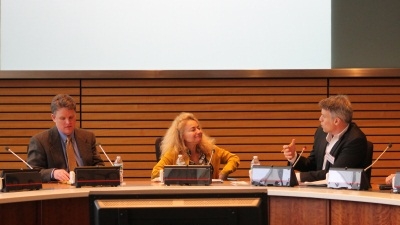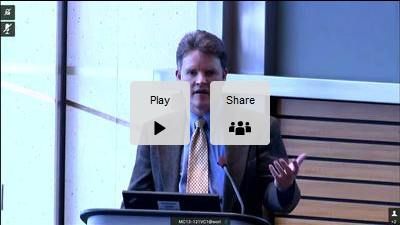Nearly two decades ago, when the concept of microfinance as a poverty reduction tool was in its infancy, there was hope that microcredit would transform economic and social structures. With its focus on reaching the previously unbanked, microcredit was expected to bring about change at the household level, a market in developing countries that traditional financial institutions had failed to reach.
Fifteen years on, the microfinance industry is estimated at $60-100 billion, with 200 million clients, but the results have been mixed. Critics cite modest benefits associated with microcredit, overindebtedness, and a trend toward commercialization that is less focused on serving the poor.
This March, the Research Department’s Policy Research Talk was given by Lead Economist Robert Cull, who drew on a variety of data and research to examine the varied track record of microfinance institutions, and where this approach to poverty reduction might be headed. The Policy Research Talks are a monthly event held by the research department to foster a dialogue between researchers and their colleagues across the World Bank.
Research Director Asli Demirguc-Kunt, who hosted the event, said that “The initial narrative around microfinance—that it was going to unleash the entrepreneurial spirit of the poor and lead to significant growth and poverty reduction—was never really all that realistic. Those with more measured expectations generally focused on consumption smoothing and risk management aspects, and also on micro-savings and micro-insurance, instead of just on credit. Nevertheless, there are a lot of questions and concerns about microfinance.”
Cull summarized the findings of six experimental studies of microcredit ranging from Ethiopia to Morocco to Mexico that were the focus of a Financial Services for the Poor conference held this past February at the World Bank, with the involvement of J-Pal and CGAP; in general these studies pointed to increases in borrowing, self-employment activities, and some business investments. There were also modest reductions in wage labor supply, while the impact on consumption was mixed. However, “you don’t see anything transformational in terms of household incomes, wealth, or poverty levels,” he said.
Cull drew on new data from the Microfinance Information eXchange (MIX), which is supported by the World Bank through the work of the Consultative Group to Assist the Poor, to provide an overview of how different microfinance providers operate in the market. MIX is the largest industry data source on the finances of microfinance institutions.
On average, lenders incur higher costs in making smaller loans, and they in turn charge borrowers higher interest rates. Different types of microfinance institutions cater to different market segments, with NGOs and non-bank financial institutions targeting the poorest and banks more focused on reaching the less poor, but more commercially viable, portion of the market. “The notion that we can serve the poorest of the poor without reliance on subsidy is far-fetched at this point. We will need to make changes not only to the model but to the delivery mechanism,” he said.



